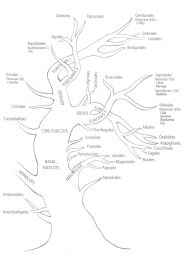Ferdinand Giese (1781-1821)
[Full name: Johann Emanuel Ferdinand von Giese] discovered caffeine as a terminally ill person in the last year of his life, which ended shortly after 40.
He was born on January 13, 1781 at Schaumburg near Küstrin.
After attending the gymnasium in Küstrin, he trained as a practical pharmacist and chemist in Schrader's laboratory in Berlin. Then, in order to deepen his practical knowledge, he moved to the chemical factory of Dr. Dingeler in Augsburg in 1802. However, he left this position in the same year to be employed in Vienna on Scherer's recommendation as an imperial royal court official in the emperor's pharmacy.
Towards the end of 1803 he received a request from his friend, the Baron of Jaquin [Jacquin, Joseph Franz (1766-1839)], to accept the position of adjoint professor of [pharmacy and] chemistry at the university to be established in Kharkov, and was confirmed at a 'higher authority' for this post.
Before he went there, he obtained a doctorate in philosophy in Erfurt, and immediately after his arrival in Kharkov in 1804 he set up a chemical laboratory to spread and perfect chemistry in Russia. After he had become an associate professor of chemistry here in 1805 and a full professor in 1811 – and had made several trips to study mineral waters in southern Russia – , he was appointed full professor in Dorpat on November 6, 1814, where he received a title similar to a 'Collegiate Councillor' in 1819 and the St. Anna Order of the second class in 1817. This Ritterorden explains the title 'von' in his name.
He was a corresponding member of various imperial academies and societies.
Ferdinand Giese was an eminent chemist and author of a multi-volume textbook of chemistry and published many original publications in the then renowned chemical journals.
Giese's Work on Caffeine
After studying the isolation of quinine from cinchona bark, he focused on the effective principle of coffee. He published his observations in Allgemeine Nordische Annalen der Chemie, 4(1820).
"After using a new separation method for coffee, I have already obtained a significant very fine, uncoloured crystallisation from it, probably a new alkaloid. The Kaffeestoff will therefore probably be the first to be eliminated as a compound substance from the series of the current Extraktivstoffe*. The bitter Extraktivstoff, in particular that of Quassia, which I am also now investigating, will meet the same fate."
* Extraktivstoff was a term used by chemists around the turn of the 19th century for anything indefinable that could be extracted with water but did not dissolve in alcohol. It belongs to the dark side of the early plant chemistry.
One month later (October 18, 1820), Giese reported in a second letter more details about his progress regarding the isolation of the Kaffeestoff (German text):
"In my last letter, which accompanied the treatise on extractive substances, I already noticed some details about the separation of the ‘Kaffeestoff’ in combination with acetic acid, in the manner of my method used in the analyses on the cinchona bark and communicated in 1819. It will be interesting for you, before you receive the continuation of the treatise on the assumed individual genera of the ‘Extraktivstoff’, in which more details will also be given on the so-called ‘Kaffeestoff’, to at least already now obtain some new knowledge about it. The same crystallizes with the acetic acid in asbestos- like, fine needles over an inch long, from One Point. Sulphuric acid separates the acetic acid from it and forms with it transparent crystals of prismatic shape. (...) This plant substance is a new alkaloid and is found in coffee, in addition to other components, it is also associated with sugary substances."
Everyone who has ever isolated caffeine knows about its characteristic crystallization. Giese gives it an excellent description: asbestos-like and sharp needles sprouting from one point. Furthermore, he noticed that the crystals were partly undecomposed volatile.
A little later (as to published data) but possibly at the same time (in practical reality) Pierre-Jean Robiquet experimented with coffee (see next page).
Relationes, Band 23. Elena Roussanova Deutsch-russische Beziehungen in der Chemie des 19. Jahrhunderts. Erster Teil, Biobibliographien. Aachen, Shaker 2018
The 'Caffeines'
The
Caffeine Plants


